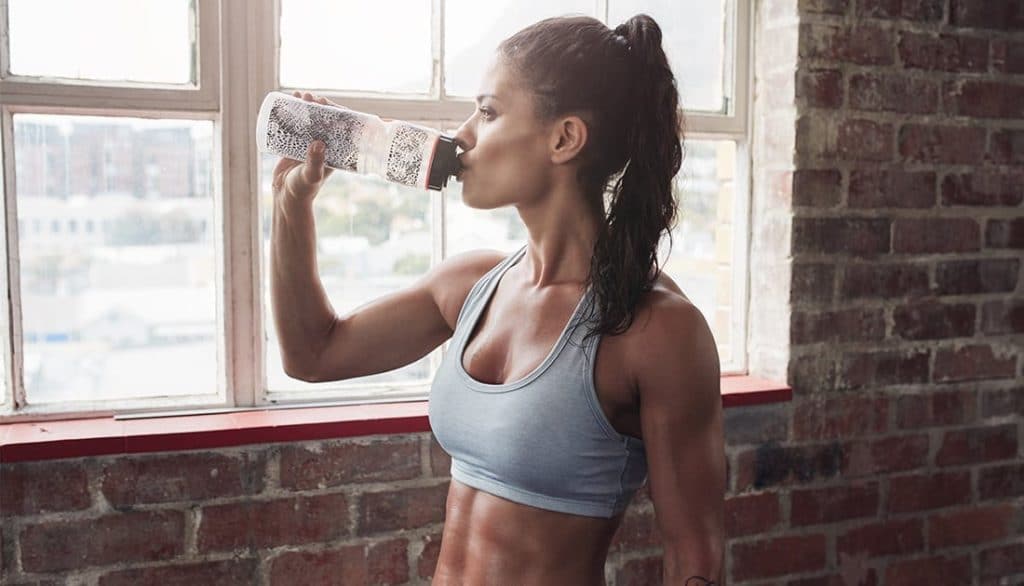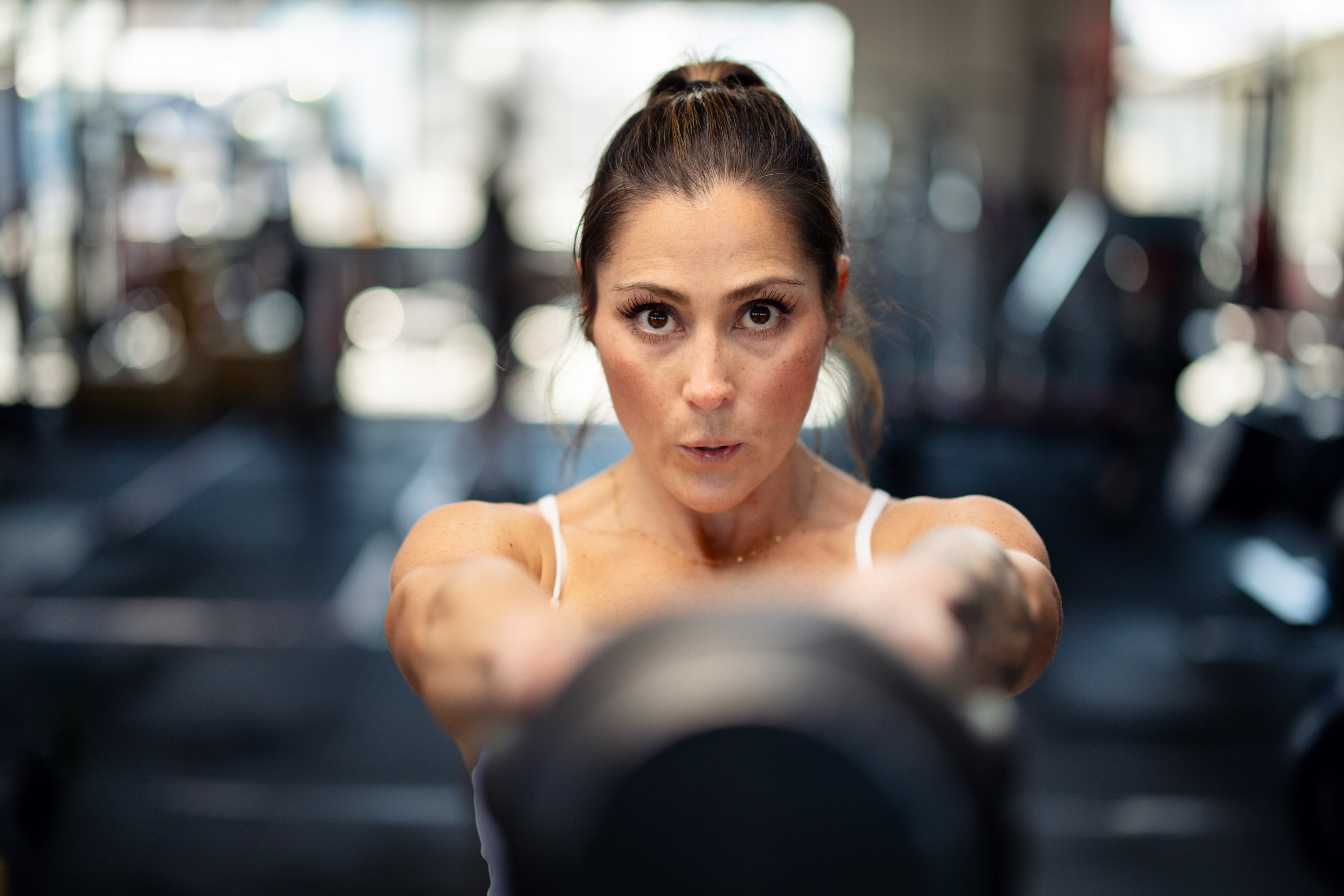If you’re a hard training female athlete, you’re at a higher risk for certain essential nutrient deficiencies. Read on to find out what nutritional pitfalls await the active female athlete.
Physical fitness is more popular than ever these days, with more and more people heading to gyms than ever before. It’s not just men embracing the gym either; females have taken to fitness like never before and are staking a claim in all sports including but not limited to bodybuilding, powerlifting, strength training, CrossFit, etc.
In tandem with this surge has been a rampant increase in the number of studies investigating the nutritional needs of the female athlete.
In this article, we discuss the top six nutrient needs for female athletes, identified by scientific research, coaches, and trainers.
Critical Nutrient Needs for Female Athletes
Protein
Generally speaking, females tend to not consume enough protein -- including female athletes. Those females that are at an even greater risk are those who adopt vegan or vegetarian diet, as well as those dieting down to “make weight” for their respective sport. <1>
Yet, aside from carbohydrate, protein is the most important nutrient for athletes of all kind. Protein provides the building blocks your muscles need for repair and growth. Without it, recovery is impaired as is your ability to increase muscle and strength.
Current daily protein recommendations for female athletes is 1.2 to 2.0 g/kg body weight (or 0.55-0.91 g/lb. body weight). <1> This number should increase if you are in a cutting phase, so as to preserve lean muscle mass.
“What if I don’t really ever crave protein?”
Not all of us walk around craving chicken, steak or fish during the day, yet we all know in the back of our mind that protein is a must-have nutrient.
For those times when you’re not craving yet another helping of chicken or beef, it helps to have a quality whey protein.
Steel Whey™ provides 27/28 grams of protein per serving (based on flavor), mixes easily, and tastes absolutely delicious. Mix up a serving after training to kick-start the recovery and growth process, mix it into your pre-training bowl of oatmeal, or have it in the evenings to top off your protein macronutrient goals for the day.
Carbohydrates
We live in a world engulfed in fad diets, and it’s not just the casual consumer that’s duped into following these trendy eating habits -- athletes fall prey to these dietary gimmicks all the time.
If you’re training at high-intensity multiple times per week, your body needs carbohydrates.
Yet, with the escalating popularity of low-carb/no-carb diets like paleo, keto, and carnivore diets, athletes are starving their muscles of the optimal training fuel for high-intensity training -- carbohydrate (i.e. glucose).
Many will argue that once you become “fat fueled” the need for carbohydrate evaporates, but this isn’t really telling the whole truth. You see for “fast twitch” sports like sprinting, weightlifting, gymnastics, etc., your body uses glycogen (the stored form of carbohydrate) to power your muscles. The reason for this is that the body oxidizes carbohydrate for energy significantly faster than stored body fat.
In other words, if you perform regular bouts of intense exercise, and want to perform at a high level, you want carbohydrate.
Female athletes also need to be made aware of the fact that their monthly cycle affects their carbohydrate utilization and storage.
During the luteal phase, glycogen storage rises while carbohydrate oxidation falls compared to the follicular phase, due to increased estrogen and progesterone levels present in the luteal phase. <2> Due to this phenomenon, female athletes may need to focus more on loading carbohydrate during their follicular phase for the purposes of optimizing glycogen storage. <2>
How much carbohydrate do female athletes need?
As with all athletes, the carbohydrate requirements change based on activity level, training frequency, and type of sport. Research studies have shown the following, regarding carbohydrate needs for females:

Iron
Iron deficiency is incredibly common in female athletes due to a trio of factors:
- Females Tend to Consume Less Iron Through Their Diet
- Monthly Menstrual Cycles Increase Iron Loss from The Body
- Regular Exercise Enhances Iron Utilization in The Body <6>
Left unchecked, deficiencies in this essential mineral can lead to reduced muscle function, energy production, and work capacity. <2,5> As such, it’s imperative that female athletes ensure adequate iron intake whether through the diet or supplementation.
How much iron do female athletes need?

Vitamin D
Vitamin D (the sunshine vitamin) is a fat-soluble vitamin that serves a role in hormone production, calcium homeostasis, immune system function, and cell growth differentiation. Additionally, vitamin D also helps prevent premature aging and skin damage.
In other words, vitamin D is really, really important. Yet again, most people (including both male and female athletes) are deficient in this very important vitamin. In fact, research estimates that well over 40% of the population is deficient in vitamin D. <7>
What’s the reason for Vitamin D deficiency?
Simply put, we don’t spend enough time outdoors in the sun.
You see, our bodies synthesize vitamin D from cholesterol when exposed to the sun. But, longer commutes, increased work hours, and staying indoors too much has led to chronic D deficiency on a global level. Coupled with this is the fact that not very many foods are naturally rich in vitamin D either.
Deficiency of Vitamin D is associated with fatigue, poor immune function, bone breaks, poor recovery from exercise, and depressed mood. As such, it’s imperative that athletes address their vitamin D deficiency by spending more time outdoors and/or supplementing with Vitamin D3.
Most multivitamins supply Vitamin D3 these days but depending on the brand, you may or may not be getting sufficient amounts. If you need a little extra vitamin D and want to enhance the quality of your skin at the same time, there’s Steel Beauty™.
Steel Beauty™ provides 25% of the RDI of Vitamin D in each serving.
Calcium
Porous, fragile bones, better known as osteoporosis, is a major public health concern affecting over 10 million adults. 80% of that 10 million (i.e. 8 million) are women. On top of that 34 million other adults suffer from osteopenia -- low bone mass. In case you weren’t aware, osteopenia very frequently precedes osteoporosis.
At the center of osteoporosis is a deficiency of the essential mineral calcium. Your bones store the vast majority (99%) of calcium. When intake is low and calcium is required, your body leeches it from your bones to fulfill its needs. If this happens frequently enough, individuals experience osteopenia, which then leads to osteoporosis. And, with that comes the significantly greater risk of bone fractures and breaks.
But that’s not all, calcium deficiencies also impair blood clotting, muscle contractions, nerve transmission, and protein utilization.
Research has noted that between 72-90% of ALL females fail to consume enough calcium. <2> Sports nutrition researchers highly recommend obtaining calcium through the athlete’s diet as various studies have shown a link between supplemental calcium and adverse kidney and cardiovascular events. <8,9>
Dietary sources of calcium include seeds, yogurt, milk, cheese, leafy greens, and whey protein. Steel Whey™ provides 12% of the RDI of calcium in each serving.
Vitamin K2
Vitamin K2 is another essential fat-soluble vitamin that plays a significant role in bone health. This is due to the fact that your body requires Vitamin K2 for the absorption of calcium. <11>
Vitamin K2 transports calcium from your blood and stores it in your bones. And since females have thinner bones, and less bone mass, than their male counterparts, vitamin K2 becomes increasingly important for female athletes. <10>
Unfortunately, vitamin K2 isn’t found in all that many foods, outside of saying fermented soy, which not too many of us tend to eat on a daily (or even monthly) basis. As such, to help satisfy your vitamin K2 requirements, and ensure calcium storage in the body, it’s suggested to invest in a quality multivitamin.
Takeaway
While the majority of sports nutrition research has been conducted with male subjects, sufficient amounts have been carried out studying the female athlete and identified the areas of most concern. These six nutrients are among those continually highlighted by sports scientists, registered dietitians, and coaches.
If you are a female athlete and looking to ensure optimal performance, recovery, and health, take a close look at your nutrition plan and see if you’re at risk for any of these deficiencies.
References
- Cialdella-Kam L, Kulpins D, Manore MM. Vegetarian, Gluten-Free, and Energy Restricted Diets in Female Athletes. Knechtle B, ed. Sports. 2016;4(4):50. doi:10.3390/sports4040050.
- Rossi, K. A. (2017). Nutritional Aspects of the Female Athlete. Clinics in Sports Medicine, 36(4), 627–653.
- Manore, M. M. (1999). Nutritional needs of the female athlete. Clinics in Sports Medicine, 18(3), 549–563.
- Steinbaugh, M. (1984). Nutritional needs of female athletes. Clinics in Sports Medicine, 3(3), 649–670.
- Gabel, K. A. (2006). Special Nutritional Concerns for the Female Athlete. Current Sports Medicine Reports, 5(4). Retrieved from
- Alaunyte, I., Stojceska, V., & Plunkett, A. (2015). Iron and the female athlete: a review of dietary treatment methods for improving iron status and exercise performance. Journal of the International Society of Sports Nutrition, 12(1), 38.
- Forrest, K. Y. Z., & Stuhldreher, W. L. (2011). Prevalence and correlates of vitamin D deficiency in US adults. Nutrition Research (New York, N.Y.), 31(1), 48–54.
- Kim BY, Nattiv A. Health considerations in female runners. Phys Med Rehabil Clin N Am 2016;27(1):151–78.
- Goolsby MA, Boniquit N. Bone health in athletes: the role of exercise, nutrition, and hormones. Sports Health 2017;9(2):108–17.
- Nieves, J. W., Formica, C., Ruffing, J., Zion, M., Garrett, P., Lindsay, R., & Cosman, F. (2005). Males have larger skeletal size and bone mass than females, despite comparable body size. Journal of Bone and Mineral Research : The Official Journal of the American Society for Bone and Mineral Research, 20(3), 529–535.
- Maresz K. Proper Calcium Use: Vitamin K2 as a Promoter of Bone and Cardiovascular Health. Integrative Medicine: A Clinician’s Journal. 2015;14(1):34-39.

